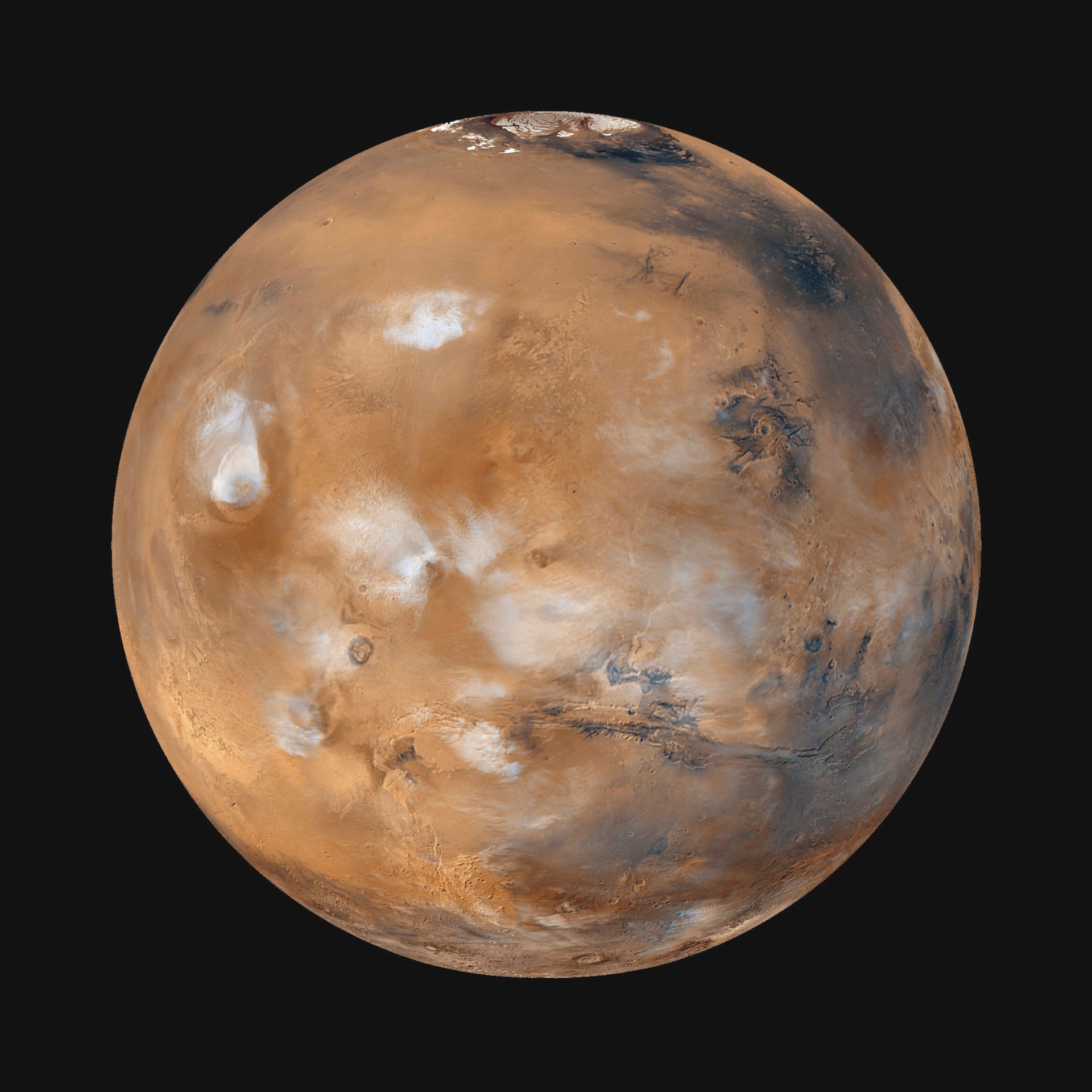Revealing insights into cloud formations on Mars
Analysis of new images taken from the Emirates Mars Mission highlights the daily and seasonal patterns of the Aphelion Cloud Belt.
The Emirates Mars Mission (EMM) is primarily focused on gathering extensive data about the Martian atmosphere, and has been sent into a higher orbit around Mars than many previous missions. The EMM is revealing new knowledge about the climate patterns on Mars, which will improve climate and weather forecasting for future research and surface missions.
Samuel Atwood, postdoctoral fellow at Khalifa University, is one of an international team of scientists involved in analysing the datasets from the EMM. The team has recently published new findings related to the Aphelion Cloud Belt1—a cloud formation made of water ice particles that appears close to the equator when Mars is furthest from the sun. The team analysed the structure and daily fluctuations of the cloud belt, which is present during spring and summer in the northern hemisphere. Atwood is part of the Khalifa University and University of Colorado-Boulder EMM collaborative research programme that launched in 2020.
“Cloud thickness is a useful variable to include in weather modelling, but measuring a cloud’s mass from space is tricky.”
“Measuring many of the basic properties of clouds, which atmospheric scientists take for granted on Earth, is more difficult on Mars,” says Atwood. “EMM’s higher orbit allows us to make observations at all local times across a wide surface area, and we can measure dust, water ice clouds, and temperatures across spatial and temporal scales that haven’t been examined before.”
The team used image data from the Emirates eXploration Imager (EXI) on board EMM, and combined these new images with those taken by the Mars Color Imager (MARCI) on a previous mission. This allowed them to determine the ‘ice optical depth’—in other words, how thick each area of cloud is—at different times of the day.
“Cloud thickness is a useful variable to include in weather modelling, but measuring a cloud’s mass from space is tricky,” says Atwood. “Instead, we can measure how much light passes through the cloud, which gives an indication of how thick it is. If we can learn more about when and where clouds occur, and how extensive they are, this helps us determine the underlying conditions that form them.”
Their results show that there were fewer clouds near midday than in the mornings or afternoons. The cloud belt is much thicker and covers much more of the planet in the mornings than at any other time of day, particularly during the Aphelion season — the period in each Martian year when Mars is farthest from the Sun.
“These results will be compared against atmospheric computer models to help identify key processes, and understand how we might adjust our models to better match observations,” says Atwood. “Ultimately, we want to understand the atmosphere in detail so that we can improve weather forecasting and climate predictions on Mars.”
References
1. Wolff, M.J. et al. Diurnal variations in the Aphelion Cloud Belt as observed by the Emirates Exploration Imager (EXI). Geophysical Research Letters, 49, e2022GL100477 (2022). | Article




